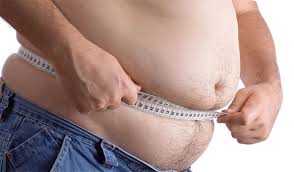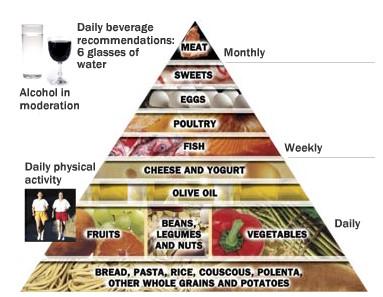If you’re not losing weight despite exercising and changing your diet, you’re probably frustrated, discouraged, and maybe even depressed. Weight loss is a complex process involving a variety of factors we control, such as diet, exercise, activity levels, stress, and sleep habits, and some we can’t control, such as genes, gender, hormones, age, and body type.
The first thing to check is medical problems you might have. How long has it been since you had a check-up? Are You taking any Medications? It’s possible your medications are the problem. Your doctor can change your meds. So if none of that pertains to you read on.
You may need to work harder to lose weight and be extra careful with your diet. Keep a food diary, monitor changes in your weight, and let your doctor know if you gain more than 5 pounds in a month without any changes to your diet or exercise.
More on what to do if you can’t lose weight: Assess Your Diet | Assess Your Workouts | Assess Your Situation and Lifestyle | Assess Your Expectations
The most important factor in weight loss is how many calories you’re eating versus how many calories you’re burning. Even if you think you’re being very good with your diet, it is easy to underestimate how many calories you’re actually eating. If you have had so much success in weight loss it’s normal to cheat a little, that’s why you have to keep a food log. It’s easy to lose track of the calories you’re actually eating. So, if you are stuck at a plateau it might be your food.
Research has found that most of us underestimate how much we’re eating, especially when we eat out. One research paper published in JAMA mentioned a study in which 99% of over 190 adults underestimated calories in high-caloric food. For example, when assessing fettuccine alfredo or chicken fajitas, the subjects often underestimated calories by 463 to 956, a huge difference and one that could easily sabotage your weight loss goals.
Careful scrutiny of your diet is the only way to know what you’re really eating:
Determine how many calories you need – You can use an online calculator to determine how many calories you need.
Keep a food diary – Use a printed form or an online tracking program, such as Calorie Count or FitWatch. Keep this diary every day for at least a week, being as specific as possible: Measure your portions, read food labels, or access nutritional information if you’re eating out.
Analyze your diet – Online tracking websites will often give you an overview of how many calories you’re eating as well as a breakdown of different nutrients. You can also turn an objective eye to your overall eating habits and look for ways to cut calories. Could you eat out less? Find healthier substitutes for some of your staple foods like yogurt, bread, cheese, another dairy, and chips? Find new, low-calorie recipes? You might even consider working with a registered dietician who can make more specific recommendations.
Keep in mind that you may have to continue keeping a food diary every day to stay on track. Successful weight losers regularly monitor both their eating habits and weight to avoid gaining weight. It may seem like a hassle but, if you really want to lose weight, it’s a must.
Exercise is another crucial element to weight loss, along with your daily activity levels, but it’s hard to know if you’re doing the right workouts or burning enough calories.
Start by looking at your overall program to get a sense of how much you’re exercising. For weight loss, experts often recommend up to 60-90 minutes of exercise each day. If you’re not even close to that, this gives you a place to start as you work through your plateau.
This doesn’t mean you have to start working out for 2 hours a day. In fact, that’s a bad idea if you’re not used to that level of exertion and could lead to injury, burnout, or overtraining.
What it does mean is that you need to make a very important decision: Either you need to increase your workout time and intensity to match your weight loss goals or you need to change your weight loss goals to match what you’re actually doing.
Don’t forget, it’s not just about structured exercise. Working out for an hour doesn’t cancel out the next 8 or 9 hours of sitting (something many of us do). In addition to exercise, try to be as active as you can: Take regular breaks from the computer, take walks whenever possible, stretch, wear a pedometer to see how many extra steps you can get in, limit your TV time, etc. If you spend more than 8 hours sitting, that could be one more reason you’re having trouble losing weight.
Diet, exercise, and physical activity are all crucial elements in weight loss. However, there might be other contributing factors that make it harder to lose weight. If you’re not losing weight, access your situation and lifestyle for other contributing factors such as:
Age – It’s frustrating, but one side effect of aging is slower weight loss. After 40, your metabolism starts slowing down and hormonal changes (for women, menopause and for men, andropause) make it harder to lose weight. That doesn’t mean you can’t lose weight, just that you may need to adjust your expectations for a more realistic timeline.
Gender – Men usually have more muscle than women and, as a result, often lose weight faster.
Genes – Some people are genetically predisposed to be obese. Our genes regulate how our bodies store and burn the energy we get from food and, for some of us, our genes have a tendency to hustle those calories into the body, lock them in and throw away the key. If you have a family history of obesity, there may be a genetic component that makes weight loss harder. However, that doesn’t mean you’re at the mercy of your genes or that you can’t lose weight. In fact, studies show that exercise can actually offset this weight problem.
Look for my podcasts on anchor.fm, or the podcast app on your cell phone. Search “howbaddoyouwanttoloseweight".
If you really want to lose your body fat then look for my e-books at the websites listed below. You’ll get information on Healthy eating, exercise, and diet. Instead of spending hours on the internet reading dozens of posts, you can save time by picking up one of my e-books.
There are two e-books. “How Bad Do You Want To Lose Weight?” is available at all the online bookstores selling for $3.99. Go to any of the websites below and search the title to find my e-book. This book gives you all you need to lose weight without spending money on gym memberships, diet plans, or meal plans. Look for my book. at Amazon.com, B&N.com, iBooks, Kobo.com, Scribd.com, or Gardner Books in the U.K.
My new e-book is available on Smashwords.com, just type “getting to a Healthy Weight” in the search box at the top of the home page.










